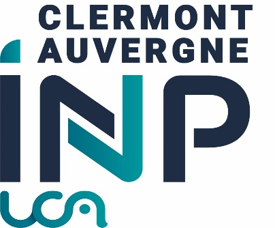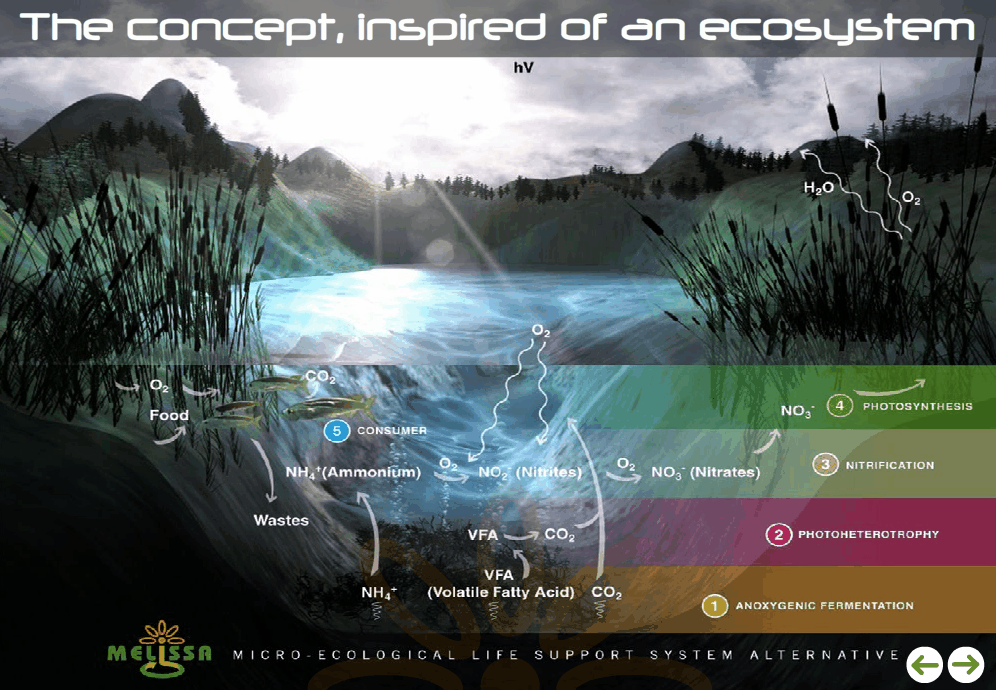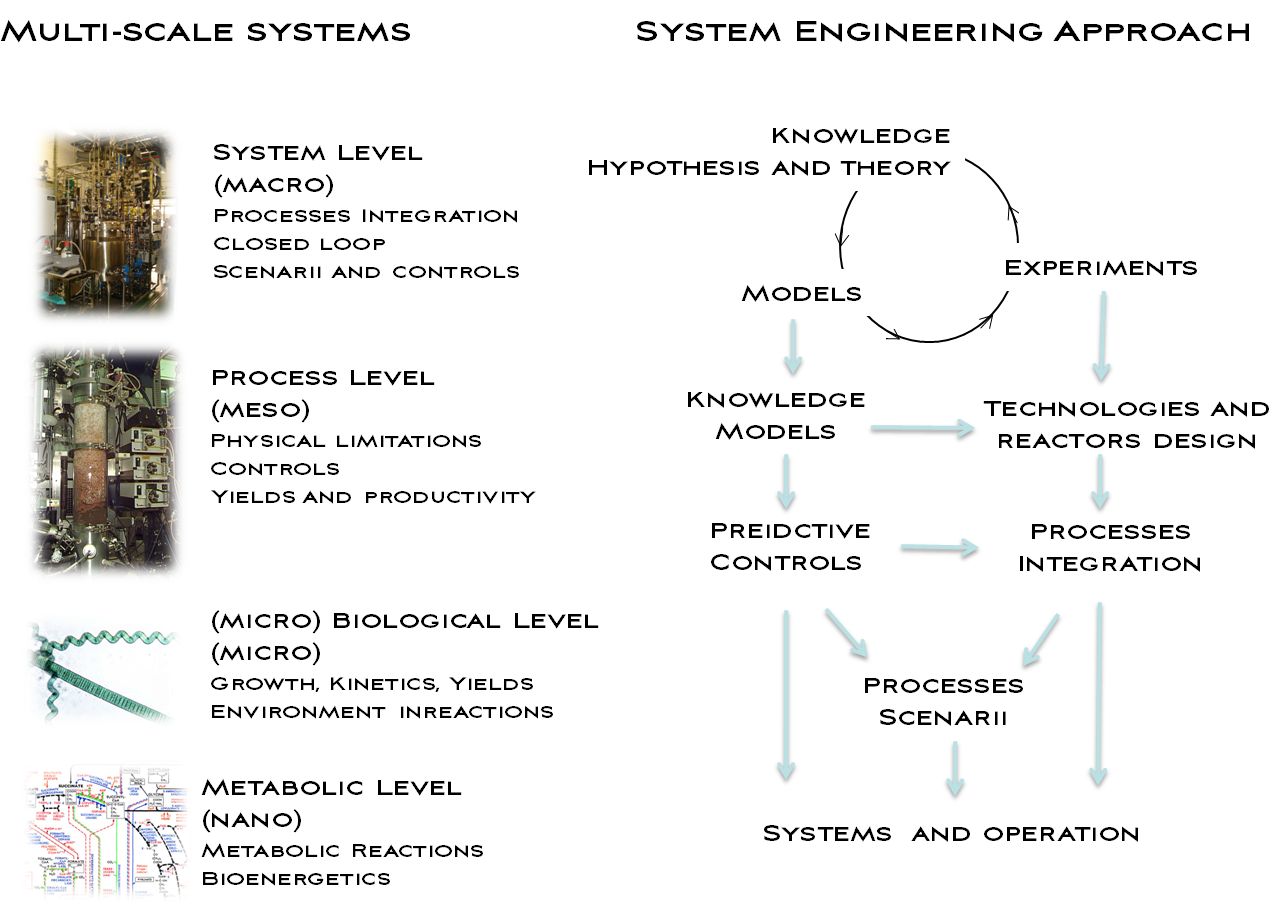MELiSSA - European Space Agency (ESA) closed artificial ecosystem as advanced life support system
 |
MELiSSA - European Space Agency (ESA) closed artificial ecosystem as advanced life support systemContacts : C. Creuly, JF. Cornet, C.G. Dussap, J.P. Fontaine, L. Poughon Dedicated web site : ESA-ESTEC-MELiSSA |
Context
The artificial closed ecosystem MELISSA (Micro Ecological Life Support System Alternative) has been conceived as a micro-organisms and higher plants based ecosystem intended as a tool to gain understanding of the behaviour of artificial ecosystems, and for the development of the technology for a future biological life support system (BLSS) for long term manned space missions, e.g. a lunar base or a mission to Mars. MEliSSA is composed of 5 sub-systems (or compartments) leading to a closed system which is based on an "aquatic" ecosystem. Each sub-system is a bioreactor (excepting C4b and C5)dedicated to a very specific function in the whole system, with a final goal of producing the elements required to sustain Human life (food, water, oxygen) from the wastes produced by the crew (faeces, urine, CO2).
Initiated in March 1989, this European Space Agency (ESA) program is one of the few world Closed Ecological Life Support Systems project and involves several teams in europe and canada. This lies within the framework of the MELiSSA Memorandum Of Understanding (MOU), which is placed under the management of ESA. The aim of this MOU is to set up a cooperation scheme to ensure a proper coordination of all MELISSA activities, either performed under ESA funding or independently, by means of funding from other organisations.
|
|
Concept the MELiSSA loop C1 : Anaerobic digestor (thermophilic consortium). Degradation of organic mater into CO2+VFA C2 : Anaerobic photobioreactor (Rh. rubrum). Production of biomass and CO2 from VFA C3 : Fixed (Ns.europeae +Nb. winogradskyi). Autotrophic nitrification. C4a : Photobioréacteur. (A. platensis). Production of O2 and biomass. C4b : Higher Plant Chamber (HPC). C5 : Crew module * source: UAB-MELiSSA Pilot Plant 2007 |
GePEB and MELiSSA
The team GePEB (previously LGCB – Laboratoire de Génie Chimique et Biochimique) is an early partner of the MELiSSA project (since 1989). It contributes to the project with it's expertise on (photo)bioreactors processes and is involved mainly in:
All projects are studied following a multi-scale approach. This approach is based on knowledge acquisition of the processes studied in order to develop robust knowledge model for predictive process control laws, simulation of MELiSSA loop scenarii or reactors design and scale-up. |
|
Main studies (past and present)
- C1 : Analysis and modelling of anaerobic digestor ( plant + faeces substrate)
- C2 : Study (lab scale) and modelling of Rs. Rubrum in photobioreactor
- C3 : Study (lab scale) and modelling of autotrophic nitrification in Fixed Bed column
- C4a : Study (lab scale, pilot scale), reactor design and scale up, modelling of A. platensis in photobioreactor
- C4b : Plant growth model under microgravity – effects of microgavity on plant/atmosphere gas mass transfer.
- C5 : Dynamic model for crew respiration – Database for food preparation
- MELiSSA loop : Modelling and scenarii simulation – MELiSSA Pilot Plant sub-systems integration
- Biorat project : C4a – Rat compartment gas coupling demonstrator
- MASK/ARTEMIS/ARTHROSPIRA project : Membrane photobioreactor for microgravity experiment and growth analysis by online gas production measurement
- New Generation Photobioreactors project : study and development of high productivity photobioreactors
More about MELiSSA in video ....
MELiSSA (crédits : ESA -2010)
MELiSSA Pilot Plant and recycling (crédits : Production Campagne Première -2010 - French)
MELiSSA and food in space (crédits : CNRS - 2017 - French)









